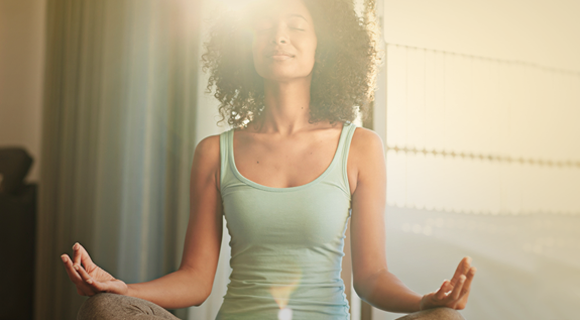
Stress management: Practicing yoga to relax
Introduction
Yoga means different things to different people. This topic focuses on a kind of yoga called Hatha yoga. One of the benefits of Hatha yoga is that it can relieve stress and help you relax.
- Yoga includes breathing, meditation, and exercises, called postures or poses, that stretch the body. You can do yoga to help you relax.
- The goals of yoga include improved physical and mental health and also “oneness” with a higher being, the self, or some form of higher awareness. But yoga does not need to be a spiritual practice for you to get the benefits.
How do you do yoga to relax?
There are lots of yoga poses you can do to help you relax. Here are a few to try. The first two yoga poses below—the extended puppy pose and the cat cow pose—are simple to learn and easy to do. It’s best to start there if you have never done yoga before. The other pose—the reclining bound angle pose—is a little more advanced. All of these yoga poses can help you relax and relieve stress.
Extended puppy pose
The extended puppy pose is easy to do and is very relaxing. Try this yoga pose for a good spine stretch and relaxation.
Caution: If you have knee problems, don’t do this pose. Or you can talk to a certified yoga instructor about how to modify this pose.
Cat cow pose
With the cat cow pose, you move from one position to another using your breath to tell you when to switch positions. This pose combines breathing and movement to help relieve stress and make the spine more flexible. Repeat the sequence 10 to 20 times. Make sure to do the movements as you breathe in and out.
Caution: If you have neck problems or an injury, keep your neck in the original position in line with your torso instead of moving it with your spine.
Reclining bound angle pose
For the reclining bound angle pose, you may need to use props to get the full benefits. A prop is something you use to support different parts of your body in a yoga pose. You can buy yoga props, such as blocks or bolsters (large hard pillows). Or you can use items that you have at home, such as pillows or blankets.
When you do this pose for the first time, take the time to adjust your props so that you can completely relax when you are in the pose. If the pose makes you tense or uncomfortable, use props. You may want to use one or more of the following props:
- One or more stiff, folded blankets to support your back.
- A rolled blanket, hard pillows, or yoga blocks to support your knees.
- A small pillow to support your neck.
Caution: Do not do this exercise after giving birth until your doctor says it is okay. If you have knee, hip, or shoulder problems, don’t do this pose. Or you can talk to a certified yoga instructor to find out how to modify this pose.
References
Other Works Consulted
- Miryala R, et al. (2011). Yoga. In M Micozzi, ed., Fundamentals of Complementary and Alternative Medicine, 4th ed., pp. 482–494. St. Louis: Elsevier Saunders.
|





